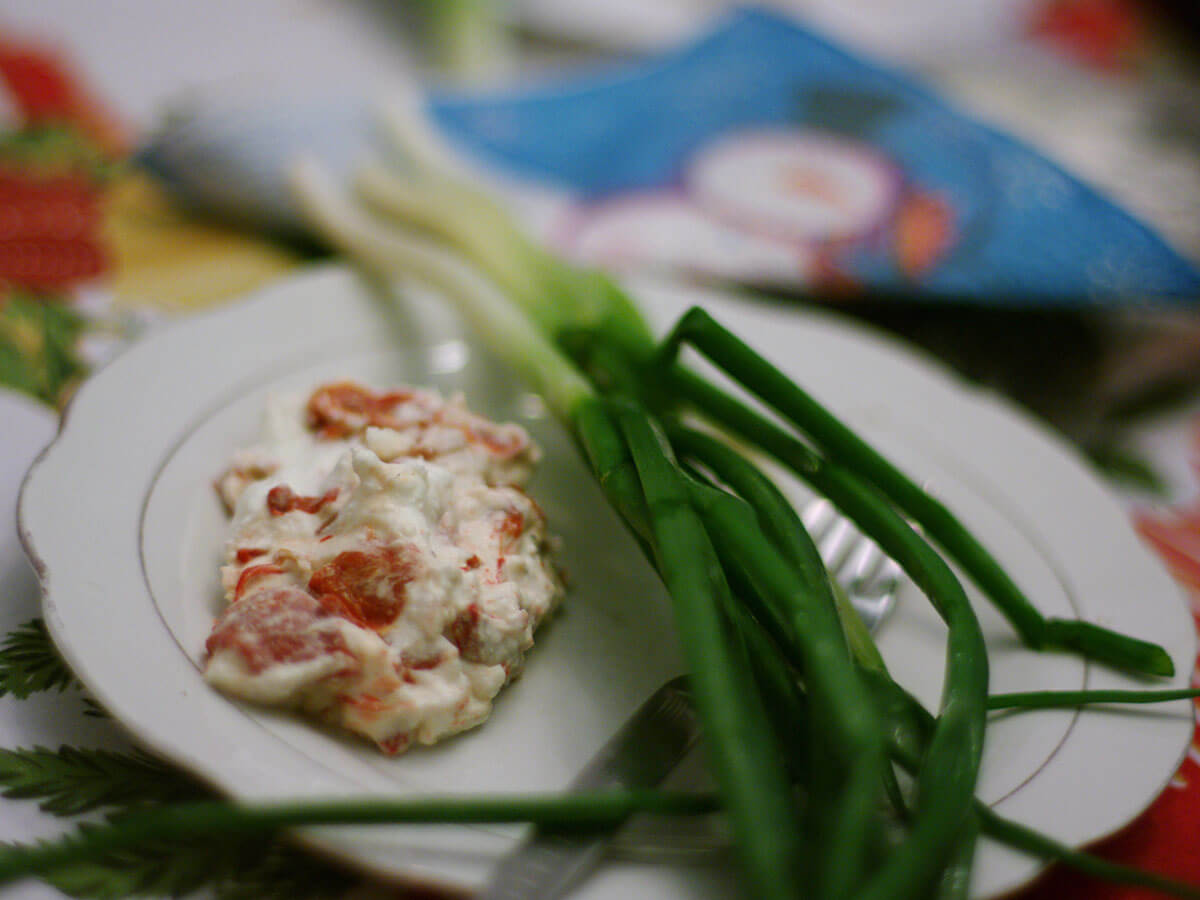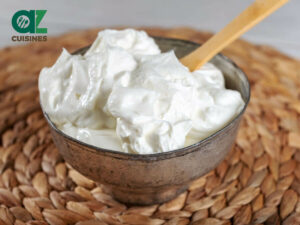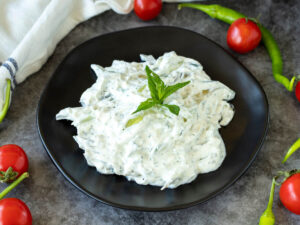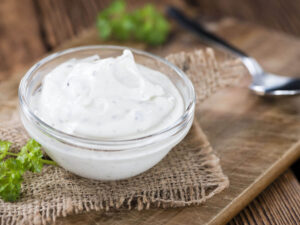Qatiq: Basic Information
Pronunciation
Alternative Name(s)
Dish Type
Course
Mealtime
Popular Variations
Qatiq: Ingredients and Preparation
Main Ingredients
Main Cooking Method
Preparation Process
Qatiq: A Deep Dive
Cultural Significance
Taste
Texture
Aroma
Color
Serving Style
Serving Temperature
Accompaniment
Occasions
Seasons
Special Diets
Calories
Popularity
Popular Similar Dishes
- Suzma
- Kurut
- Cacık
- Sour cream
- Yogurt
Popular Dining Area
Qatiq is a cherished fermented milk product from Turkic countries, often likened to a thicker version of yogurt than ayran. Its creation involves fermenting boiled milk for about 6 – 10 hours in a warm setting.
Occasionally, red beets or cherries are added for a vibrant hue. Once made, people often preserve qatiq for two to three days in a cool spot.
When left fermented longer, this milk creation adopts a tangy taste, making it perfect for rich soups like Uzbekistan’s chalop.
For a denser consistency, qatiq is strained to produce suzma, which is further dried into balls known as kurut. Interestingly, in Bulgaria, “katik” possesses the texture of mayonnaise and is enjoyed as a spread.
When you’re done reading about the features of qatiq, I’d like to bring you the positive and negative features relating to consuming qatiq along with some common concerns.
Key Points
Qatiq Images
Pros And Cons of Eating Qatiq
These are a few benefits and downsides of qatiq, like the nutritional aspects, that you need to consider before having this fermented milk, all presented in a comprehensive table:
Pros
Cons
After settling all the pros and cons of having qatiq, keep your thirst for knowledge going with some of the most common inquiries about this unique milk creation of Turkic.













Adam Sam
Senior Food and Drink Editor
Expertise
Food Writer & Recipe Developer, Recipe Tester, Bartender, Cooking-video Maker, Editor In Chief
Education
Adam Sam, an experienced food writer and recipe developer, is passionate about blending diverse culinary traditions, national dishes, and innovative beverages, showcasing his proficiency in both traditional and modern recipe testing.
As the Editor-in-Chief, he elevates culinary content from street food to fine dining, focusing on Western cuisine and types of drinks at azcuisines.com, and is professional in creating engaging cooking videos that simplify complex dishes and ingredients.
His passion for food is evident in his writing, where he uniquely merges various cultures, traditions, and contemporary trends, skillfully combining classic recipes with modern cooking methods.